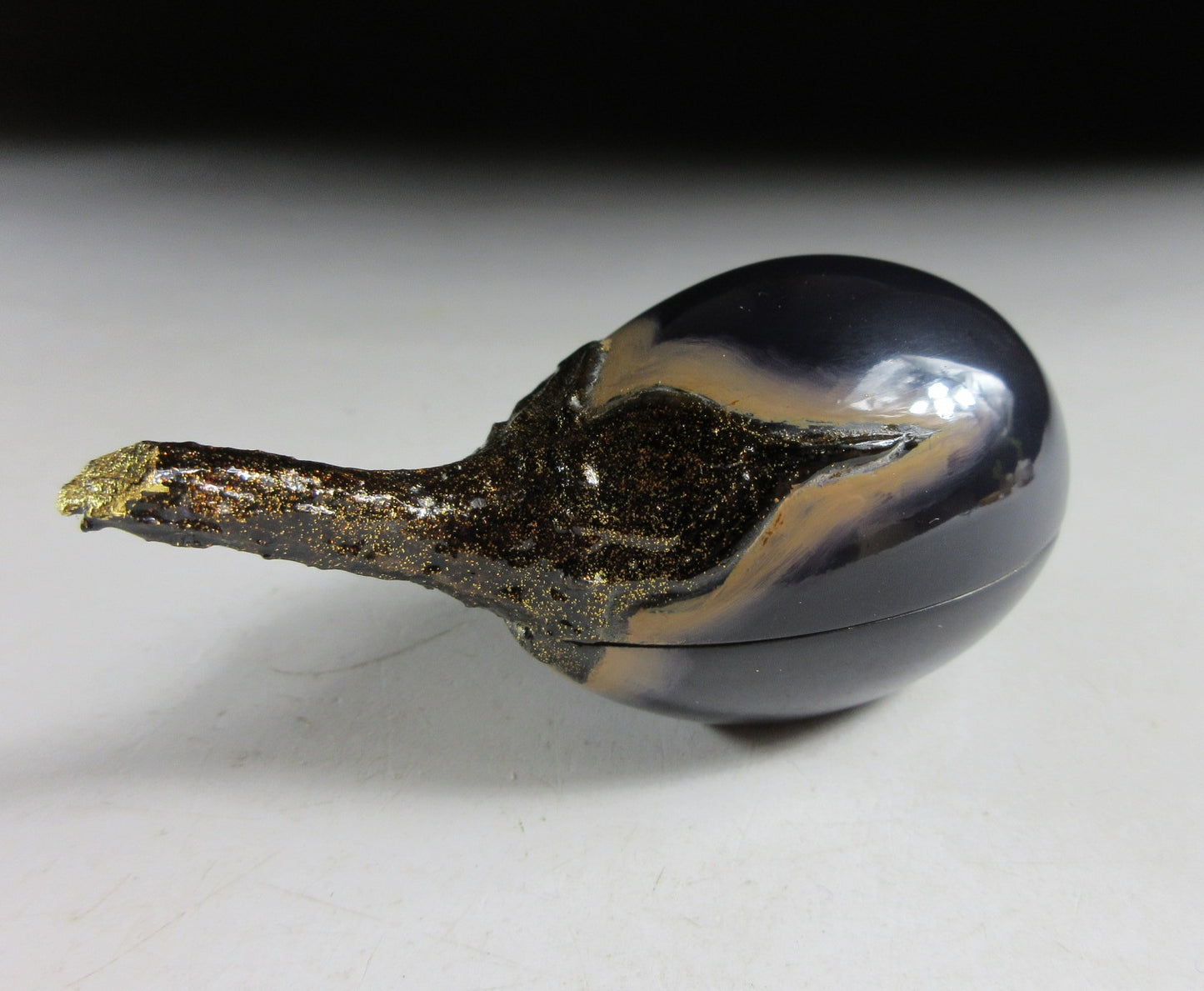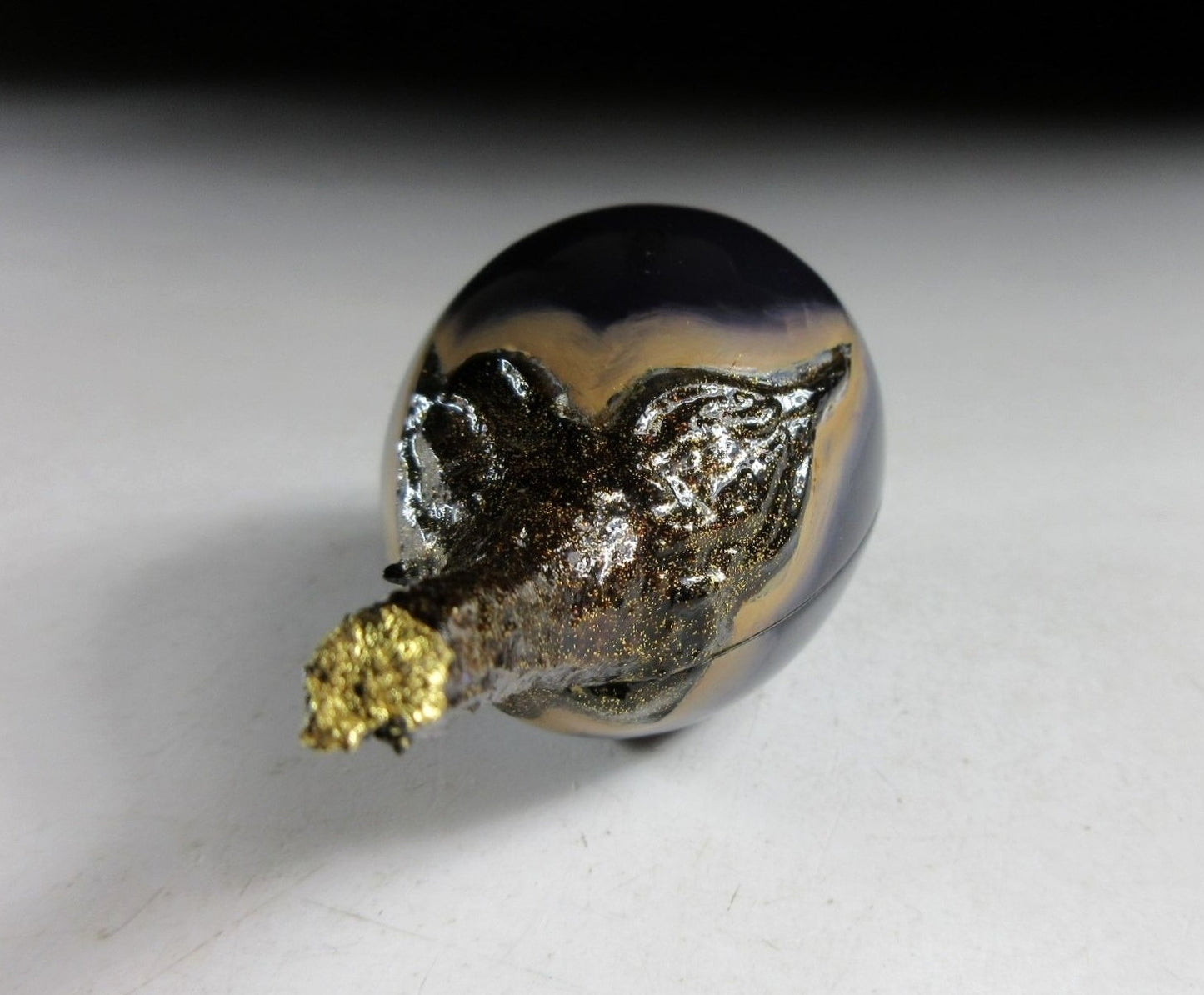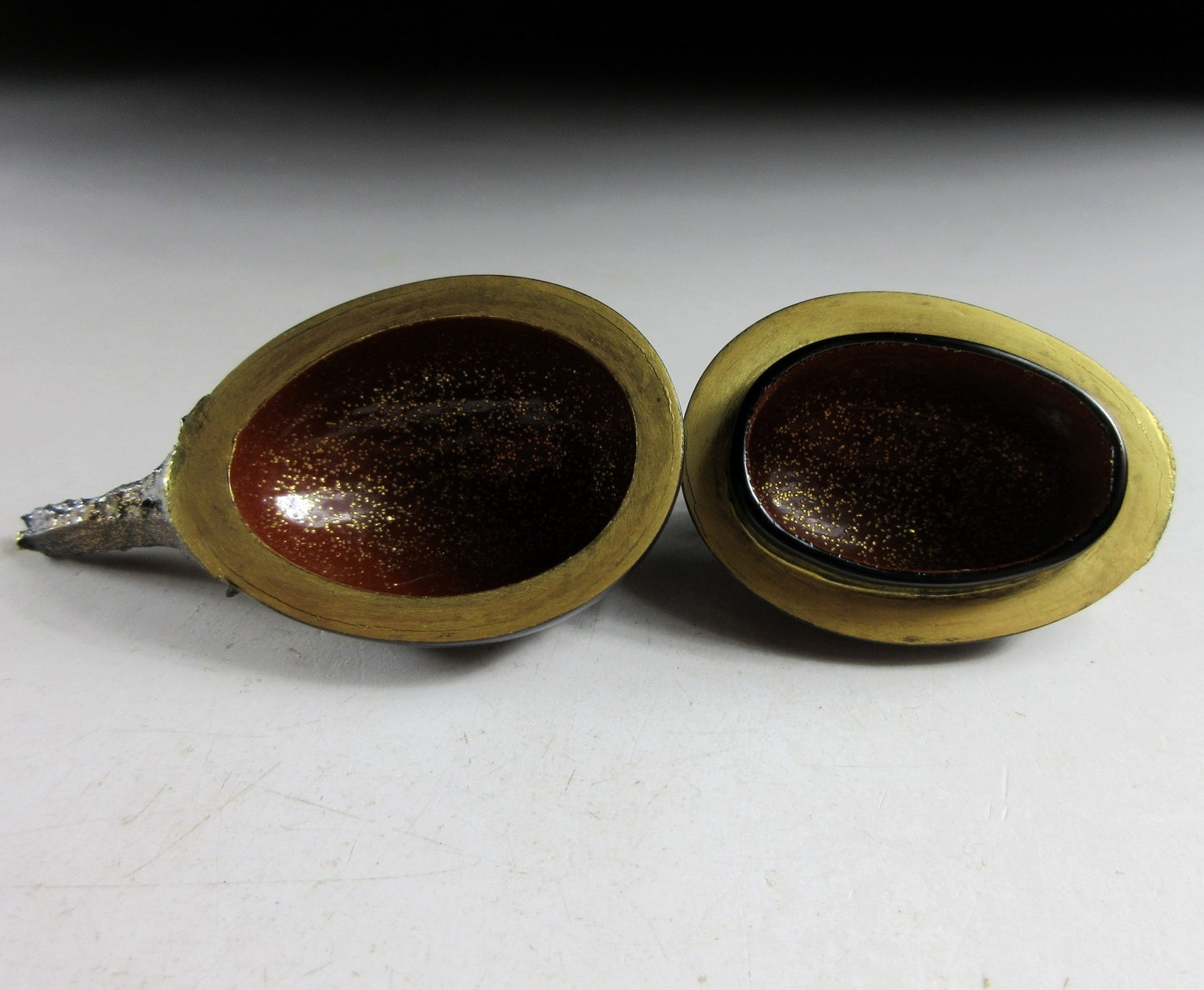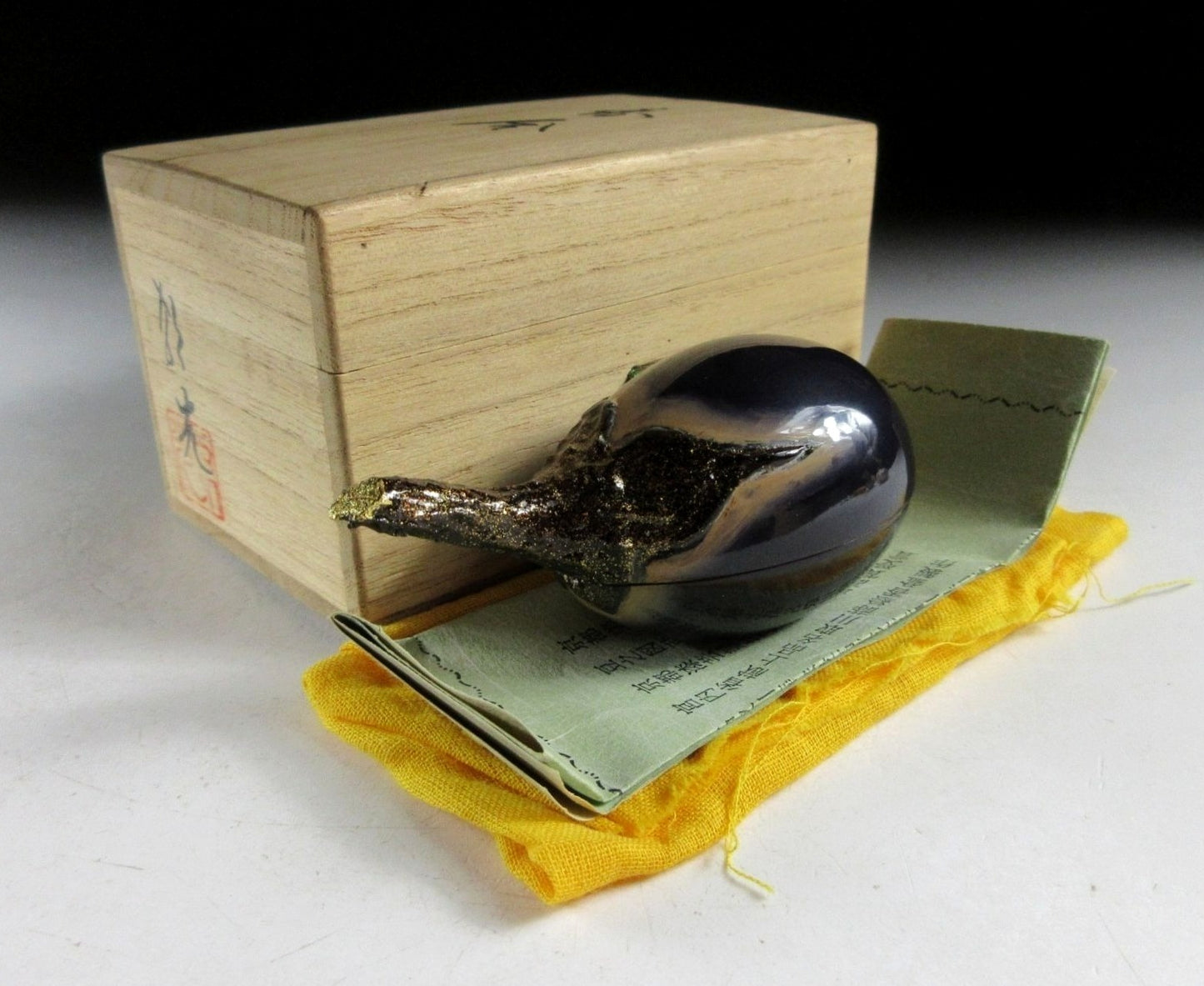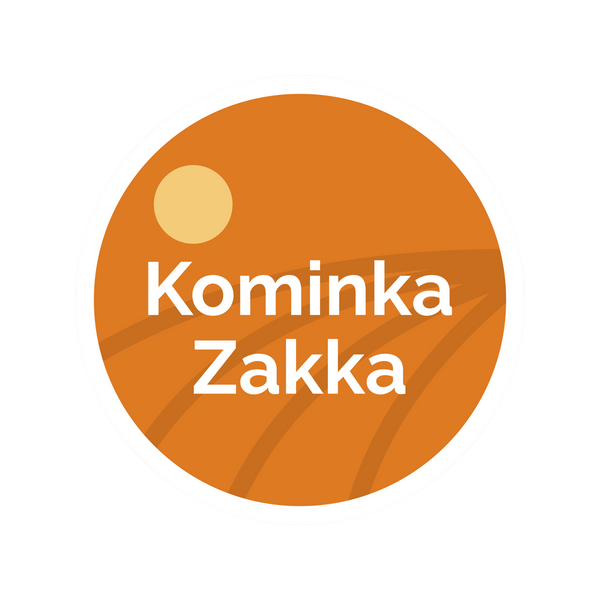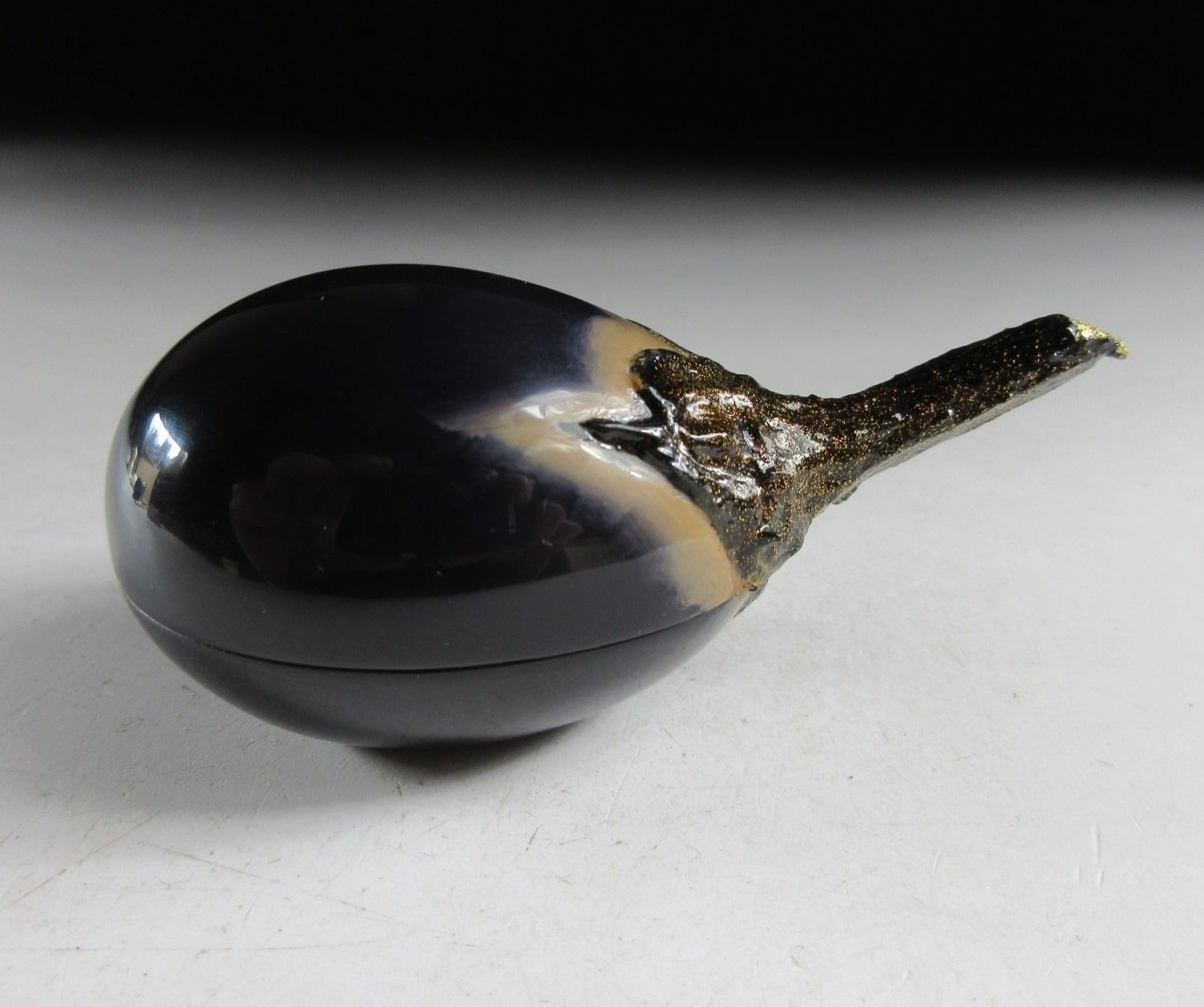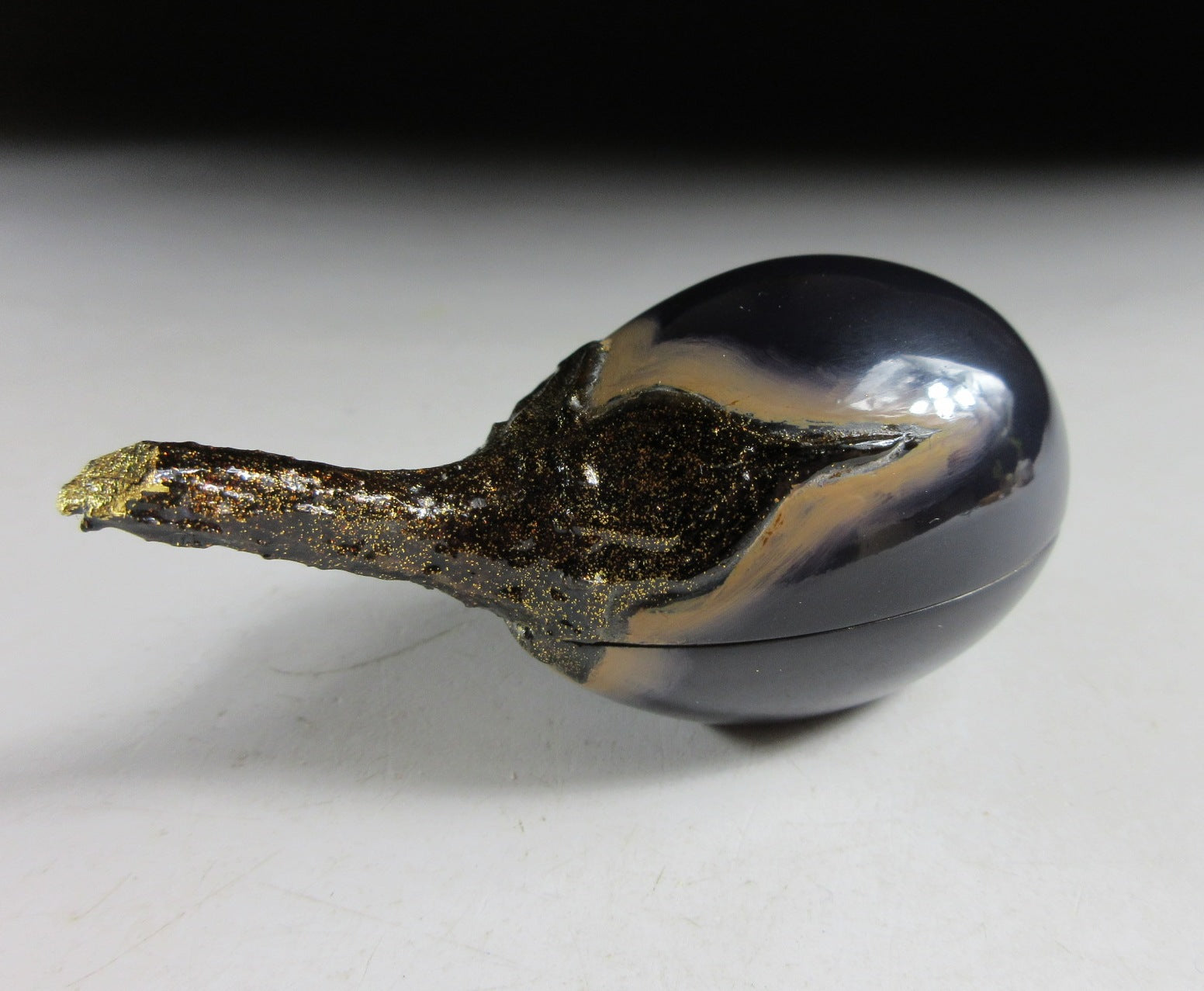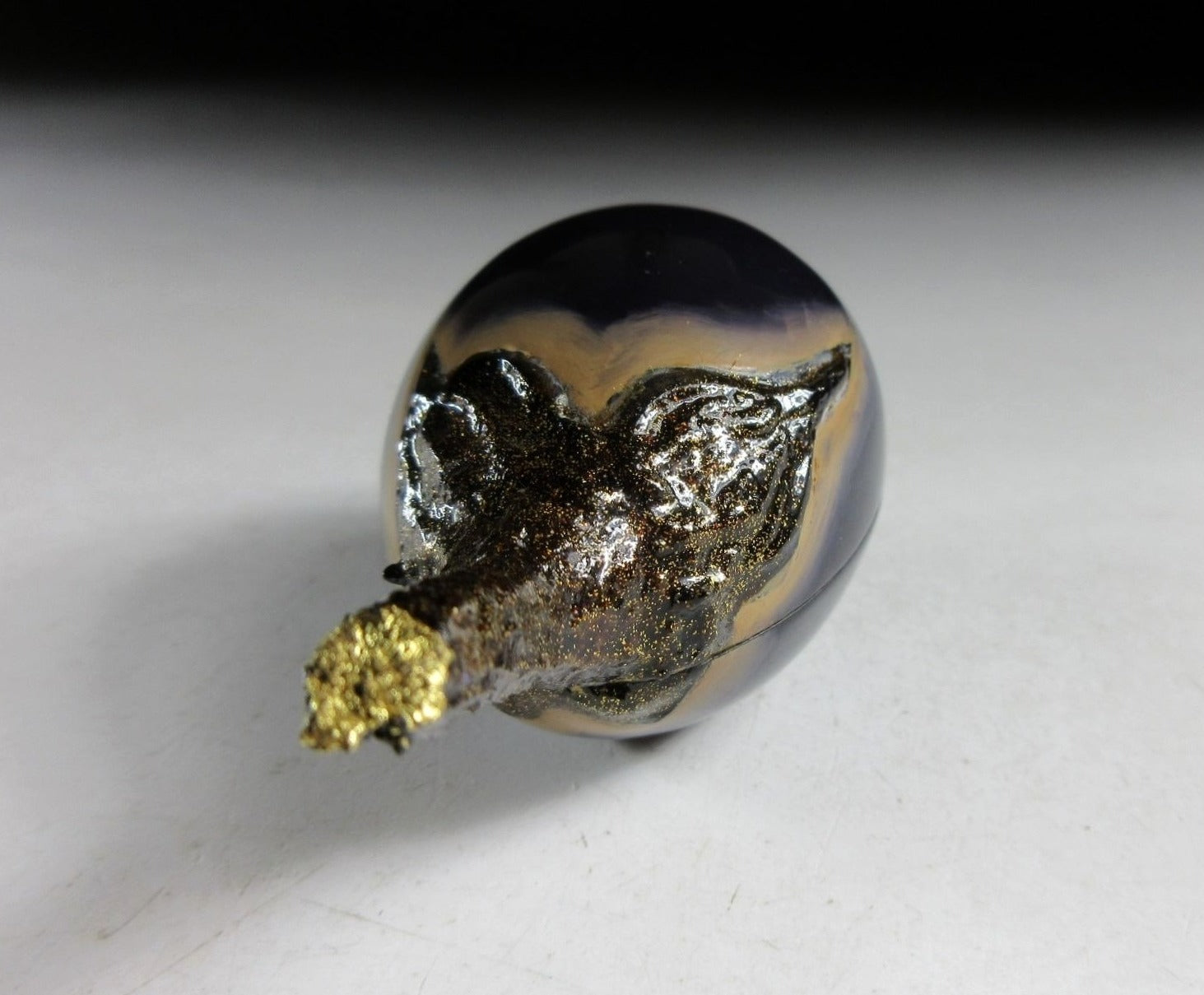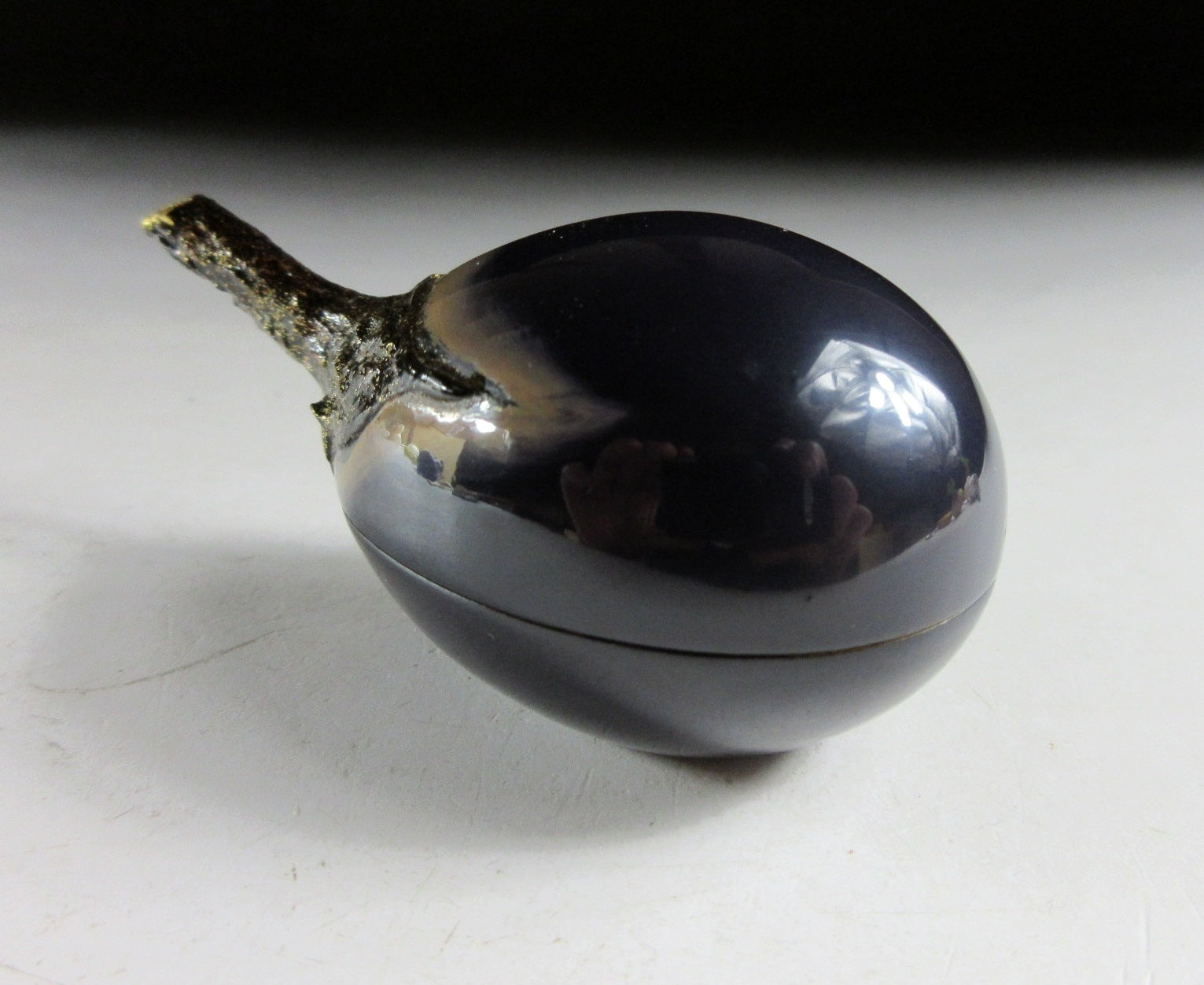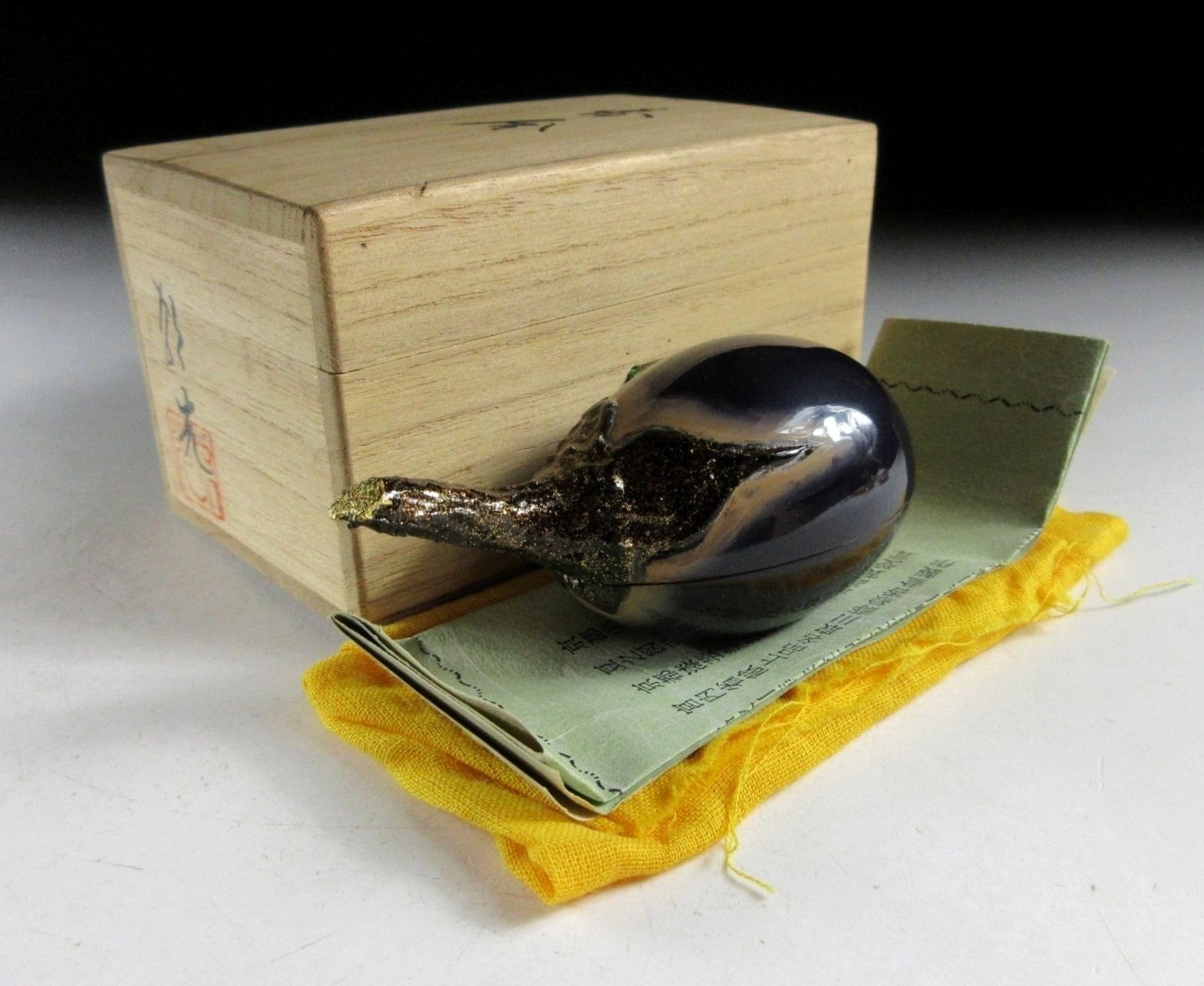Kominka Zakka
Nishizuka Choko II Wajima Eggplant Kogo
Nishizuka Choko II Wajima Eggplant Kogo
Couldn't load pickup availability
*SHIPPING OPTIONS VARY DEPENDING ON THE DESTINATION, PLEASE SCROLL TO THE END OF THIS LISTING FOR MORE DETAILS.
This listing is for a splendid Wajima-nuri lacquerware kogo made around 20-30 years ago by lacquerware master craftsperson, Nishizuka Choko II. It is moulded to resemble an eggplant, and the interior features sheets of gold foil. The beloved eggplant holds special meaning in Japan, it is seen as particularly good luck if your first dream in the New Year includes Mt. Fuji, a hawk, and an eggplant. Also eggplants also happen to be one of Japan’s more popular summer vegetables, and this is because they are believed to have a cooling effect on the body. Its size and shape is suitable for both woodchip and kneaded incense, although wooden and lacquer kogo are typically used for woodchip incense during the warmer months. It comes with its original signed wooden storage box, and a turmeric coloured wrapping cloth for when the item is not in use. It also comes with a Japanese language profile paper.
Nishizuka Choko II (born Seiichi 1915-2000) was a second generation Wajima lacquerware master from Ishikawa Prefecture. He studied under master craftsman Tomita Koshichi (1854-1910) and became a professor at the Kyoto School of Fine Arts. He was a purveyor to the Imperial Household, one of his best pieces was a makie ‘tebako’ (accessories box) purchased by the Kuni-no-Miya branch of the imperial family. He also presented a makie ‘Natorigawa’ (wave pattern) incense tray to the Ministry of the Imperial Household. Marquis Maeda Toshinari (1885-1942), the 16th head of the Maeda family of the former Kaga clan, purchased a kabuto suzuribako (inkstone case decorated with a samurai helmet). During his career he exhibited at several prestigious exhibitions such as Teiten (Exhibition of the Imperial Academy of Fine Arts), Bunten (Ministry of Education Fine Arts Exhibition), and Nitten (Japan Fine Arts Exhibition). He received the Marquis Maeda Award at the Bunten Exhibition, and the Grand Prize at the Kyoto Lacquer Art Exhibition. He also received the Makie Natorigawa Grand Prize from the Governor of Ishikawa Prefecture, and was an invited artist of the Contemporary Art Society. He received Art Preservation Certification from Ishikawa Prefecture, and his work was used for a makie sticker series promoted by the Ishikawa Institute of Invention and Innovation. **Fellow sellers, this information was researched by Kominka Zakka and CANNOT be used in your own listings.
Wajima nuri refers to lacquerware produced in Ishikawa Prefecture. The process of applying the lacquer is very complex, and there are as many as 124 steps involved. A finely powdered mineral called jinoko is used for the undercoating making it highly resistant and strong. Each piece has up to 8 layers of lacquer, this is the main reason why Wajima lacquerware is widely known throughout Japan for its high quality and durability. Wajima lacquerware commands high prices so purchases are usually reserved for special occasions such as weddings and anniversaries.
Urushi lacquerware refers to products that have been coated in natural lacquer collected from urushi trees. The process for lacquering items is long and very labour intensive, each item requiring multiple layers of lacquer that may take anywhere from six months to two years to complete. Heat and humidity are required to dry lacquer evenly and consistently, so Japan’s rainy season and summer months are ideal for this process. Urushi products are not only beautiful but also strong.
Kogo are for holding incense during the tea ceremony. Kogo vary depending on the season. In summer wooden kogo are used for holding chips of incense wood, and in winter ceramic kogo are used for holding kneaded incense intended for the hearth. During the tea ceremony, incense is added to the charcoal fire during the charcoal-laying procedure.
Sizes
Box: H.6cm (2.3”) x 10.5cm (4.1”) x 6.3cm (2.4”)
Kogo: H.3.2cm (1.2”) x L.7.8cm (3”) x W.4cm (1.5”)
Condition
It’s in very good condition aside from so minor residue on the interior.
THESE ARE SHIPPING ESTIMATES BASED ON THE CURRENT GLOBAL SITUATION
**Germany, France, Greece, Spain, Poland, Austria, Slovakia, Lithuania, Slovenia: NO SHIPPING. Very strict and expensive packaging laws in place and we are not licensed to send products to these countries. We have no plan to register at this time because the process is in some cases very expensive and complicated, plus each country has its own set of regulations and application process.
**USA: EMS Express (approx. 7-15 days). Combined shipping available (please send us a message) but please note that the price does not get cheaper for Airmail or EMS, in fact it becomes more expensive. If you want to save money and don't mind a very long 3 month wait, request sea mail (11-12 weeks depending on processing and backlogs at destination ports). Inexpensive Airmail Small Packet option unavailable.
**UK and Canada: EMS Express (approx. 7-15 days). Combined shipping available (please send us a message) but please note that the price does not get cheaper for EMS, in fact it becomes more expensive. If you want to save money and don't mind a very long 3 month wait, request sea mail (11-12 weeks depending on processing and backlogs at destination ports). Inexpensive Airmail Small Packet and regular Airmail is currently unavailable.
**Australia, New Zealand, Switzerland, Norway: Airmail ePacket (approx. 15-28 days). Combined shipping available up to 2kgs for Airmail ePacket (please send us a message).
**Asia: Airmail ePacket (approx. 15-21 days). Combined shipping available up to 2kgs for Airmail ePacket (please send us a message).
**Russia: No shipping methods available.
Share

